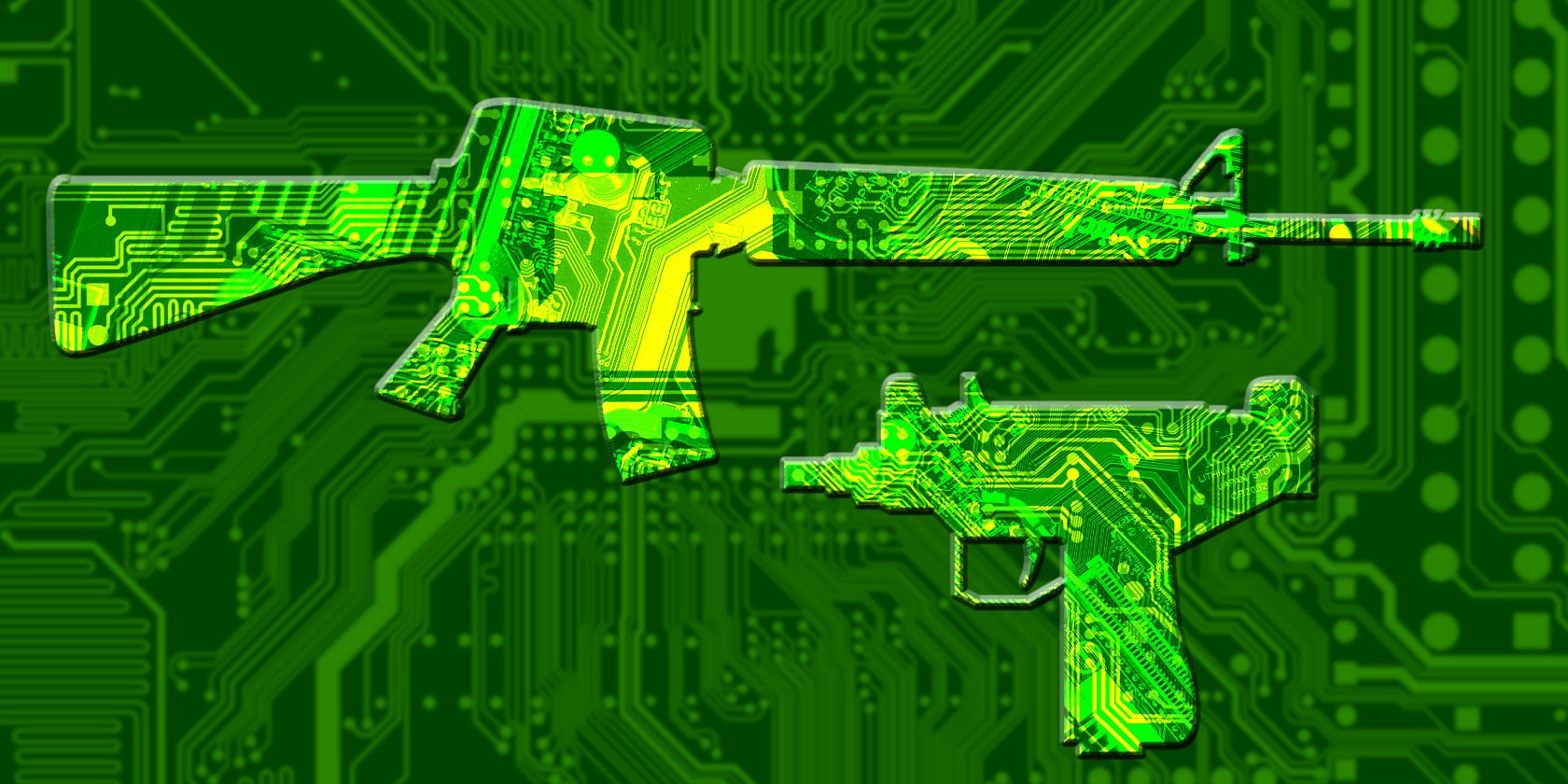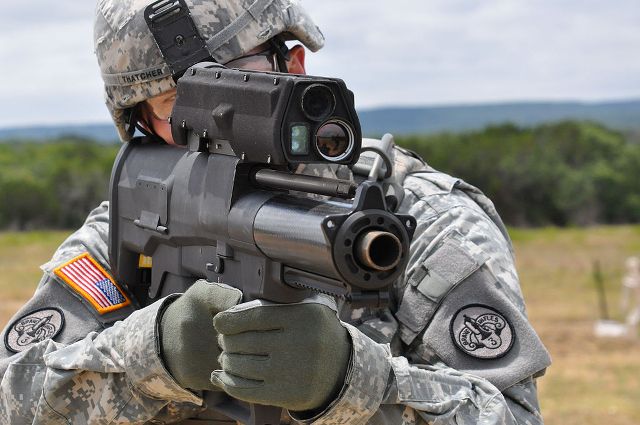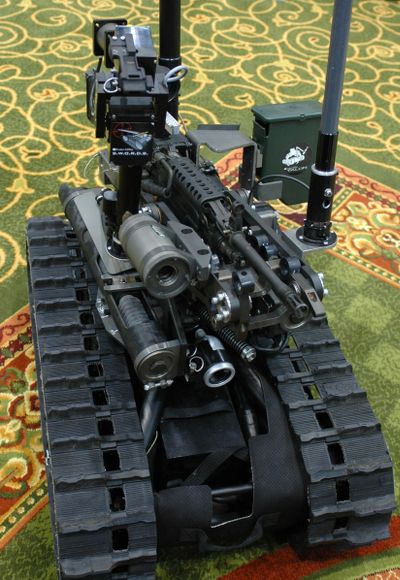Military firearms are a simple extension of previous technology; first we threw rocks. Then we used slings to send them further. We developed bows and arrows to deliver more force. Then we harnessed fire to make the first guns. Technology is ushering in the next phase, and it's fascinating.
Smart Guns
In the long-running debate about gun control legislation (which I will not take part in here), guns have been characterized as "dumb" tools. They simply do what they are told. But as with smart lamps, smart TVs, and smart cars, technology is making guns a lot more intelligent.
Take TrackingPoint, for example; the Austin-based company builds rifles that use scopes powered by the Angstrom Linux distribution to increase accuracy out to 1,000 yards by performing complex ballistic calculations. The scopes make shooting a gun more like a first-person shooter video game; targets can be tagged by the scope and will be followed by a red dot; after the trigger is pulled, the gun will fire when the scope's crosshair and the dot are aligned.
The scope takes environmental and ballistic factors into account when calculating the trajectory of the bullet, making each shot significantly more accurate than traditional human-aimed shots. Because ballistic factors are used to predict the path of the bullet, certain ammunition must be used with the TrackingPoint guns to ensure that all of the properties of the bullets are known.
While TrackingPoint is currently building guns mostly for hunters and gun aficionados with expensive tastes (the magnum rifles start at $22,500), they are doing some work with the US military, which has already started deploying another smart weapon, the XM-25 Counter Defilade Target Engagement system.
The XM-25 fires 25mm explosive shells with high accuracy up to 500 meters and "area effect" to 700. A laser rangefinder, a powerful computer-enhanced scope, and the ability to select the detonation range of the shells contributed to the XM-25's nickname of "the Punisher."
The weapon has proven to be very effective in supporting troops that are pinned down by enemy machine gun fire, as the shells can be set to explode once they fly over an enemy's cover. The capability of the launcher to provide airbursts like this sets it apart from conventional weapons, and puts it in a new class; something like highly portable artillery.
Of course, DARPA's interest in futuristic technology means it's heavily involved in the mashup between computers and guns. The One Shot XG system was developed to give snipers a better idea of wind conditions between them and their targets; when you're a mile or more away from your target, taking a wind measurement from where you are located isn't enough. To be accurate at this range, the One Shot XG scope uses lasers to gauge crosswinds between the sniper and the target, helping a shooter compensate for winds of over 30 mph.
Not impressed yet? DARPA has also developed a .50 caliber sniper bullet that can make course corrections mid-flight. The video below shows an accurately fired round and a follow-up round, intentionally aimed away from the target.
Pretty cool, huh? While it's not clear how the bullet "steers," an image posted on the DARPA site doesn't look like it has any sort of fin, which was used on Sandia National's similar guided bullet back in 2012. Don't expect many details on this to be released any time soon.
REALLY Smart Guns
If you've watched any of the Terminator movies, or played futuristic first-person shooters, you've probably given a bit of thought to the idea of autonomous, militarized robots. You might be surprised to find out that it's not just science fiction—military robots are already in use.
In March, Russia announced that they'd be deploying tracked robots to defend a number of their missile bases; these robots are armed with 12.7-mm heavy machine guns, and can engage targets without any human intervention (unlike current US military drones, which required an actual person to pull the trigger).
While the US has deployed remotely operated robots for bomb disposal, the military has been quite reluctant to use armed robots in this way, though at least two have been tested (the SWORDS and MAARS models). Although they've been used in the field, they've always been quite restricted; they're remotely operated, and generally used as stationary emplacements.
However, it seems likely that the US will eventually join Russia and other countries in building fully autonomous weapons platforms, despite UN debate over whether or not robots should be banned from combat. But with DARPA's annual Robotics Challenge, it's clear that the U.S. military is interested in further developing the field of robotics for its own ends.
While it seems unlikely that we'll be seeing humanoid robots patrolling army bases or replacing soldiers anytime soon, the high-profile deployment by Russia does make US and international deployment of autonomous lethal robots seem inevitable.
Guns of the Future
Military technology is a lucrative business, and we'll continue to see a huge amount of innovation within the next several decades. There's no telling what we'll see next: sniper rifles that are smart enough to be left on a ridge and take out their targets days later? Fire-and-forget bullets? Motion-detector-triggered machine guns? Science-fiction-like robot soldiers?
It's difficult to know, and the implications of current levels of military technology are staggering. While this might be very worrying from an ethical perspective, there's no denying that the technology itself is really exciting.
What do you think about these types of futuristic weapons? Are these advances beneficial for mankind? Or do they just make us more efficient killing machines? What about the technology? Where might it trickle down in the future? Share your thoughts below!
Image credits: U.S. Army via Wikimedia Commons, Devon Fyson via Wikimedia Commons



